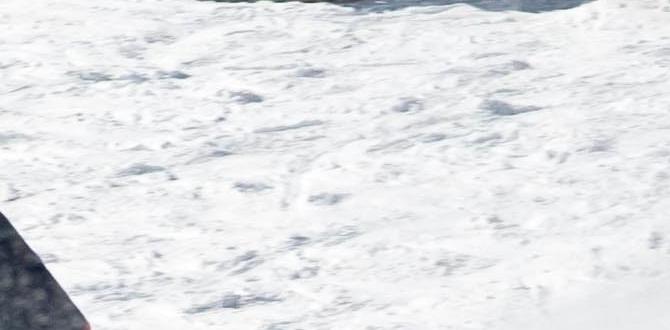This Basque Country one week itinerary is your essential guide to experiencing vibrant culture, stunning coastlines, and delicious food without the overwhelm. We’ve planned a balanced mix of must-see cities and hidden gems, ensuring a smooth and enriching adventure.
Dreaming of exploring the unique Basque Country but feeling a little daunted by planning your first trip? You’re not alone! This captivating region, straddling the border of Spain and France, offers an incredible array of experiences, from dramatic coastlines to world-class gastronomy. It can feel like a lot to pack into just a week. But don’t worry, planning a fantastic trip doesn’t have to be complicated. With a little guidance, you can create a memorable itinerary that balances iconic sights with local charm, all while keeping your comfort and enjoyment at the forefront. Get ready for an adventure that’s both exciting and easy to navigate!
Frequently Asked Questions About a Basque Country One Week Itinerary
Is one week enough for the Basque Country?
Yes, one week is a great starting point for a Basque Country itinerary. It allows you to experience the highlights of both the Spanish and French sides, or delve deeper into one region. You can comfortably visit key cities like San Sebastián, Bilbao, and perhaps a charming coastal town, while still having time to savor the local culture and cuisine.
What are the must-visit cities in the Basque Country for a week?
For a one-week trip, the absolute must-visits are San Sebastián (Donostia) for its beaches and pintxos, and Bilbao for its iconic Guggenheim Museum and transformation. If time allows and you prefer a more relaxed pace, you could also include a day trip to a smaller town like Hondarribia or Biarritz.
How should I travel between cities in the Basque Country?
The most convenient ways to travel between cities are by train or bus. Spain’s Renfe trains are efficient, and there are also several bus companies (like ALSA) connecting major towns. For more flexibility, especially if you plan on visiting smaller villages, renting a car can be a good option, though parking in cities can be challenging.
What kind of food should I expect, and is it suitable for everyone?
Basque cuisine is world-renowned! Expect amazing pintxos (small snacks), fresh seafood, hearty stews, and local cider (sidra). Most restaurants cater to various dietary needs, but it’s always good to learn a few basic phrases or have them written down. For those with specific needs, like managing adult or child diapers for comfort during long travel days or if a medical need arises, it’s wise to pack discreetly and research local pharmacies or pharmacies in larger cities that might stock familiar brands.
What’s the best way to pack for a week in the Basque Country?
Pack versatile layers! The weather can change, especially along the coast. Comfortable walking shoes are essential, as you’ll be exploring cities and nature. Include a light rain jacket, a sweater, and casual outfits. Swimwear is a must if visiting in warmer months. For specific comfort needs, like travel-friendly adult or child diapers, pack enough for your trip, considering they offer discreet and reliable protection for peace of mind.
Are there options for easy travel with children or specific comfort needs?
Absolutely. The Basque Country is generally family-friendly. Public transport is accessible, and many attractions are engaging for all ages. For parents traveling with infants or young children who require diapers, planning ahead is key. Carrying a modest supply of child diapers in a dedicated travel bag ensures you’re prepared. Similarly, adults who use adult diapers for any reason can find comfortable, absorbent options designed for travel, providing security and confidence throughout your excursions.
Your Essential Basque Country One Week Itinerary: A Blend of Culture, Coast, and Culinary Delights
Embarking on a one-week adventure in the Basque Country is an exciting prospect, promising a tapestry of vibrant culture, breathtaking landscapes, and a culinary scene that tantalizes the senses. This region, rich in its own unique identity and language, offers a distinct experience from the rest of Spain and France. However, planning a trip to cover its highlights can feel overwhelming, especially when you want to ensure comfort and practicality for everyone in your travel party, whether you’re a solo explorer, a family with children, or an adult seeking stress-free travel solutions.
The idea is to immerse yourself in the Basque spirit without the fuss. We’ve crafted an itinerary that balances iconic destinations with opportunities for authentic discovery, keeping in mind ease of travel and enjoyment. This guide will walk you through a well-paced plan, ensuring you see the best of the Basque Country in seven days. From the gastronomic heart of San Sebastián to the artistic pulse of Bilbao, and charming coastal vistas, we’ll help you navigate this incredible region with confidence. Get ready to pack your bags and prepare for an unforgettable journey!
Why a Week in the Basque Country?
A week in the Basque Country is the perfect amount of time to get a real taste of its unique charm without feeling rushed. This region boasts a distinct culture, language, and history that sets it apart. You can experience both the rugged coastlines and verdant inland landscapes, indulge in its world-famous culinary traditions, and explore cities that beautifully blend the ancient with the modern.
For travelers, a week allows for immersion. You can delve into the pintxo culture of San Sebastián, marvel at the architectural wonder of Bilbao’s Guggenheim Museum, and perhaps even venture into the picturesque French Basque Country or explore charming coastal villages. It’s a duration that balances sightseeing with relaxation, offering ample opportunity to soak in the atmosphere and create lasting memories. Plus, with practical considerations like comfortable transit and accessible facilities, a week-long trip is very manageable, even for families or those needing extra assurance for comfort and care.
The Ultimate Basque Country One Week Itinerary
This itinerary is designed to give you a comprehensive yet relaxed experience of the Basque Country’s most beloved spots. We’ll focus on convenience, cultural immersion, and of course, incredible food!
Days 1-3: San Sebastián (Donostia) – The Culinary Capital
Your Basque adventure begins in San Sebastián, a city renowned for its stunning crescent-shaped beach, La Concha, and its unparalleled gastronomic scene. Aim to fly into San Sebastián Airport (EAS) or Bilbao Airport (BIO) and take a transfer. Settle into your accommodation and prepare for a treat for the senses.
- Accommodation: Stay in the Gros or Old Town (Parte Vieja) for easy access to pintxos bars and amenities.
- Must-Do Activities:
- Pintxos Crawl: This is non-negotiable! Wander through the Parte Vieja, hopping from bar to bar, sampling exquisite pintxos (Basque tapas) and local Txakoli wine. Each bar offers unique specialities.
- La Concha Beach: Enjoy a stroll along this beautiful urban beach, or even take a dip if the weather permits. It’s one of Europe’s most picturesque city beaches.
- Monte Urgull & Monte Igueldo: Hike up Monte Urgull for panoramic views and historical fortifications. For a classic postcard view, take the funicular up Monte Igueldo to its charming amusement park.
- Parte Vieja (Old Town): Get lost in its narrow streets, discover hidden plazas, and absorb the lively atmosphere.
- San Telmo Museoa: Explore Basque history, art, and culture in this fascinating museum.
- Day Trip Option: Take a short bus or taxi ride to the charming fishing town of Hondarribia. Its colorful fishermen’s quarter and well-preserved old town are a delight.
Comfort Tip: If you’re traveling with young children who need diapers, keep a dedicated travel bag stocked with essentials. For adults requiring adult diapers, choosing highly absorbent, discreet options designed for active use will ensure you can fully enjoy the walking and exploring without worry.
Days 4-5: Bilbao – Art, Architecture, and Transformation
A comfortable train or bus ride (approx. 2.5 hours) takes you to Bilbao, a city that has reinvented itself into a cultural powerhouse. It offers a different vibe from San Sebastián, with grand avenues and a modern, artistic flair.
- Accommodation: The Ensanche district or near the Guggenheim offers convenient city access.
- Must-Do Activities:
- Guggenheim Museum: This architectural marvel by Frank Gehry is a must-see. Explore its impressive collection of modern and contemporary art, and simply admire the building’s iconic structure. Ensure you check exhibition schedules in advance. You can find more information on their official website: Guggenheim Bilbao.
- Casco Viejo (Old Town): Similar to San Sebastián’s, Bilbao’s old town is a maze of charming streets, bustling squares, and numerous bars serving excellent pintxos. Don’t miss the Santiago Cathedral.
- Azkuna Zentroa: This former wine warehouse has been transformed into a vibrant cultural and leisure center with shops, restaurants, and often exhibitions.
- Ribera Market: One of Europe’s largest covered markets, it’s a feast for the eyes and the palate.
- Walk along the Nervión River: Enjoy the modern architecture and bridges that define the city’s riverside.
- Optional Extension: Consider a day trip to the coastal town of Getxo, famous for its Bizkaia Bridge (Puente Colgante), a UNESCO World Heritage site.
Traveler’s Note: Navigating cities like Bilbao is generally straightforward. Public transport is efficient. For those carrying necessary comfort items like adult or child diapers, discreet travel pouches can be very helpful for keeping essentials organized and accessible throughout your day of sightseeing.
Day 6: A Taste of the Coast or Inland Charm
On your penultimate day, you have a choice: head further along the coast or explore a charming inland town. Both offer a wonderful glimpse into Basque life away from the major cities.
- Option A: French Basque Country Charm – Biarritz/Saint-Jean-de-Luz (France)
- Travel: Take a bus from San Sebastián (easily accessible if you return there briefly) or Bilbao towards the French border. Biarritz is about 1.5 hours from San Sebastián. Saint-Jean-de-Luz is even closer.
- Highlights: Biarritz offers grand Belle Époque architecture, surfing beaches, and the Rocher de la Vierge. Saint-Jean-de-Luz is a postcard-perfect fishing port with a lovely bay and historic streets.
- Experience: Enjoy the distinct French Basque atmosphere, sample pastries, and stroll along the glamorous promenades or quaint harbors.
- Option B: Inland Beauty – Vitoria-Gasteiz
- Travel: A direct train or bus from Bilbao (approx. 1.5 hours).
- Highlights: As the administrative capital of the Basque Country, Vitoria-Gasteiz boasts a beautifully preserved medieval old town, impressive Gothic architecture (including the Cathedral of Santa María), and a renowned green urban ring (the “Green Capital”).
- Experience: Enjoy a more laid-back city experience, explore its history, and enjoy its tranquil parks.
Practical Planning: Regardless of your choice, packing essentials for the day is key. If you rely on personal care items, such as adult or child diapers, ensure you have an adequate supply for day trips. Having these discreetly packed allows you to focus on the experience rather than any logistical concerns.
Day 7: Departure
Depending on your flight schedule, you might have time for some last-minute souvenir shopping, a final pintxo breakfast, or a leisurely walk before heading to your departure airport. If you flew into Bilbao, you’ll head back there. If you flew into San Sebastián, you’ll depart from there or travel to Bilbao for your flight.
Getting Around the Basque Country
Navigating the Basque Country is generally straightforward and offers various convenient options to suit your style of travel and needs.
Public Transportation:
- Trains: Renfe (Spanish rail) connects major cities like Bilbao and San Sebastián efficiently. Euskotren also operates regional lines, which can be useful for shorter trips or exploring smaller towns. The French side has SNCF.
- Buses: Companies like ALSA operate extensive networks, often connecting towns where trains might not reach. They are usually comfortable and affordable, a great option for day trips.
- Urban Transport: Major cities have good public bus systems and tram lines (Bilbao has a tram).
Car Rental:
- Renting a car offers the most flexibility, especially if you plan to visit smaller villages or scenic routes not easily accessible by public transport.
- Considerations: Parking in city centers can be expensive and challenging. Many towns have Zonas de Bajas Emisiones (Low Emission Zones) that may restrict entry. It’s important to research these aspects before booking.
For Families and Comfort-Conscious Travelers:
Public transport is often the most stress-free option. Buses and trains usually have designated spaces for luggage. If you need to manage personal care items like adult or child diapers, having a larger, easily accessible bag for these essentials is recommended. Familiarize yourself with facilities at transport hubs or major attractions beforehand.
Essential Tips for a Smooth Trip
To ensure your one-week Basque Country itinerary is as comfortable and enjoyable as possible, keep these practical tips in mind:
- Book Accommodation and Transport in Advance: Especially during peak seasons, popular hotels and train tickets can sell out.
- Learn a Few Basic Phrases: While English is spoken in tourist areas, knowing “Kaixo” (hello), “Eskerrik asko” (thank you), and “Mesedez” (please) in Euskara (the Basque language), or basic Spanish/French, is appreciated.
- Pack Versatile Clothing: The weather can change by the hour, especially near the coast. Layers are your friend! Comfortable walking shoes are a MUST.
- Embrace the Pintxos Culture: Don’t be shy! Go where the locals go, and try a little bit of everything.
- Stay Hydrated and Caffeinated: If you’re used to specific beverages or need regular access to drinks for personal care reasons (e.g., ensuring you have enough fluids if managing adult diapers), keep this in mind throughout the day.
- Discreet Packing for Comfort Items: For travelers who use adult diapers or parents managing child diapers, pack an adequate supply in a discrete, easily accessible travel bag. Many companies offer highly absorbent and discreet options specifically designed for active use, ensuring comfort and confidence throughout your travels. It’s also wise to know the names of common brands in Spain or France in case you need to purchase more.
- Plan for Accessibility: If you have mobility concerns or specific needs related to comfort and care, research accessibility at main attractions and transport links. Many newer facilities are well-equipped, but older parts of towns might present challenges.
A Gastronomic Journey to Savor
You can’t talk about the Basque Country without highlighting its incredible food scene. It’s a cornerstone of the culture and a major draw for visitors.
| Food/Drink Item | Description | Where to Find |
|---|---|---|
| Pintxos | Small snacks, often served on a toothpick, ranging from simple olives to elaborate creations with seafood, meat, or vegetables. | Bars and taverns, especially in the Old Towns of San Sebastián and Bilbao. |
| Txakoli (Chacolí) | A slightly effervescent, dry white wine, native to the Basque Country. Traditionally poured from a height to aerate it. | Pintxos bars, seafood restaurants. |
| Marmitako | A hearty tuna and potato stew, often considered a “fisherman’s dish”. | Traditional restaurants, especially in coastal areas. |
| Gilda | A classic pintxo consisting of an anchovy, olive, and guindilla pepper on a skewer. | Most pintxos bars. |
| Basque Cider (Sidra) | A dry, acidic cider, a social drink shared from large barrels in cider houses (sidrerías).
|





